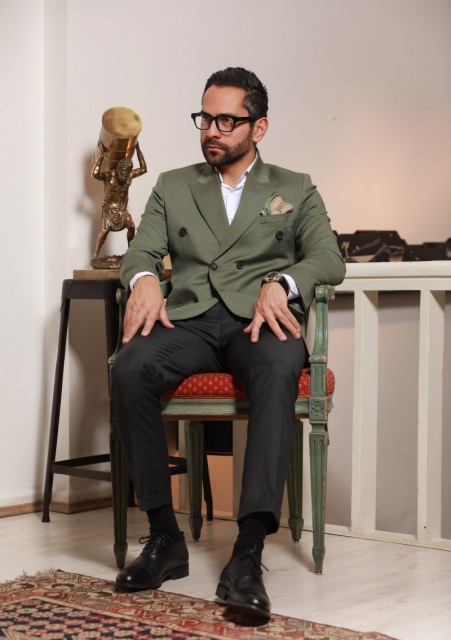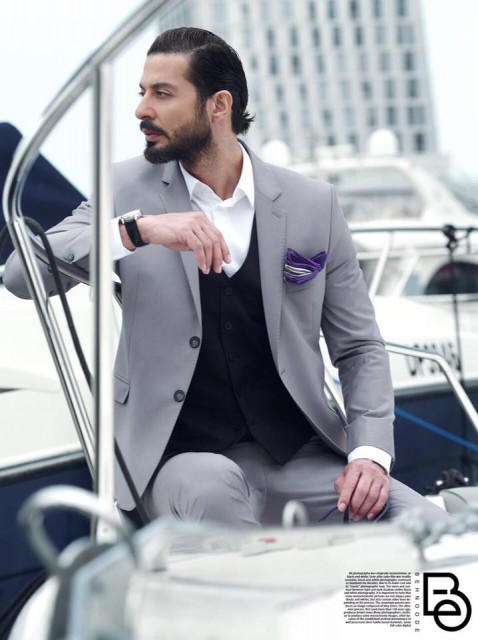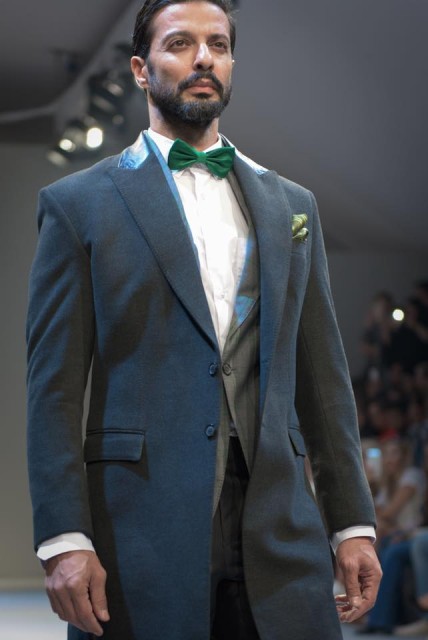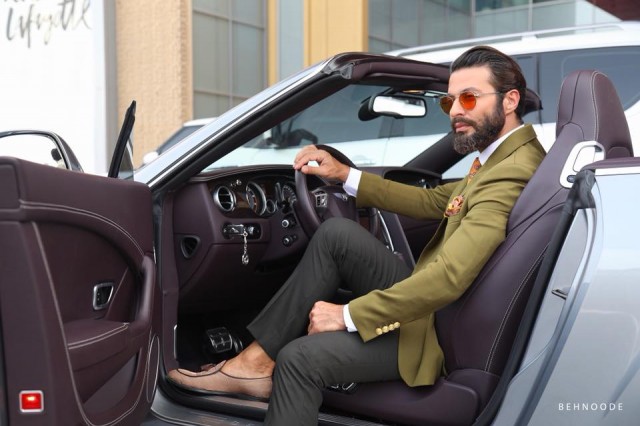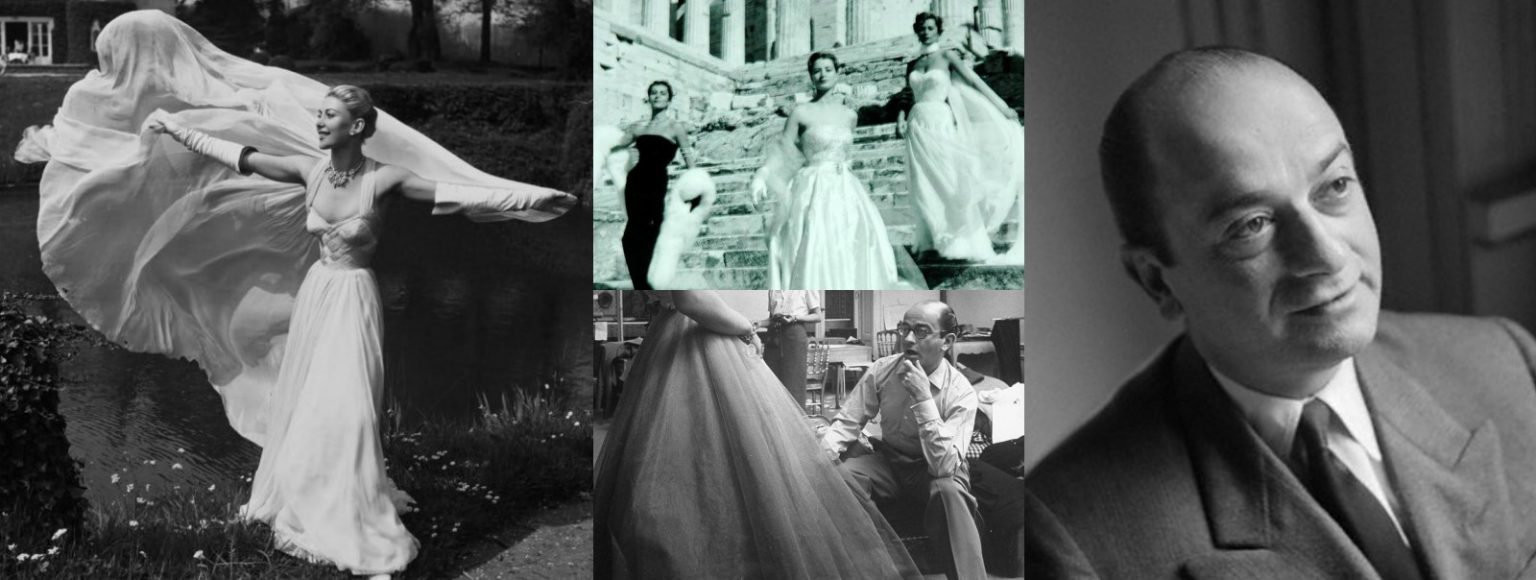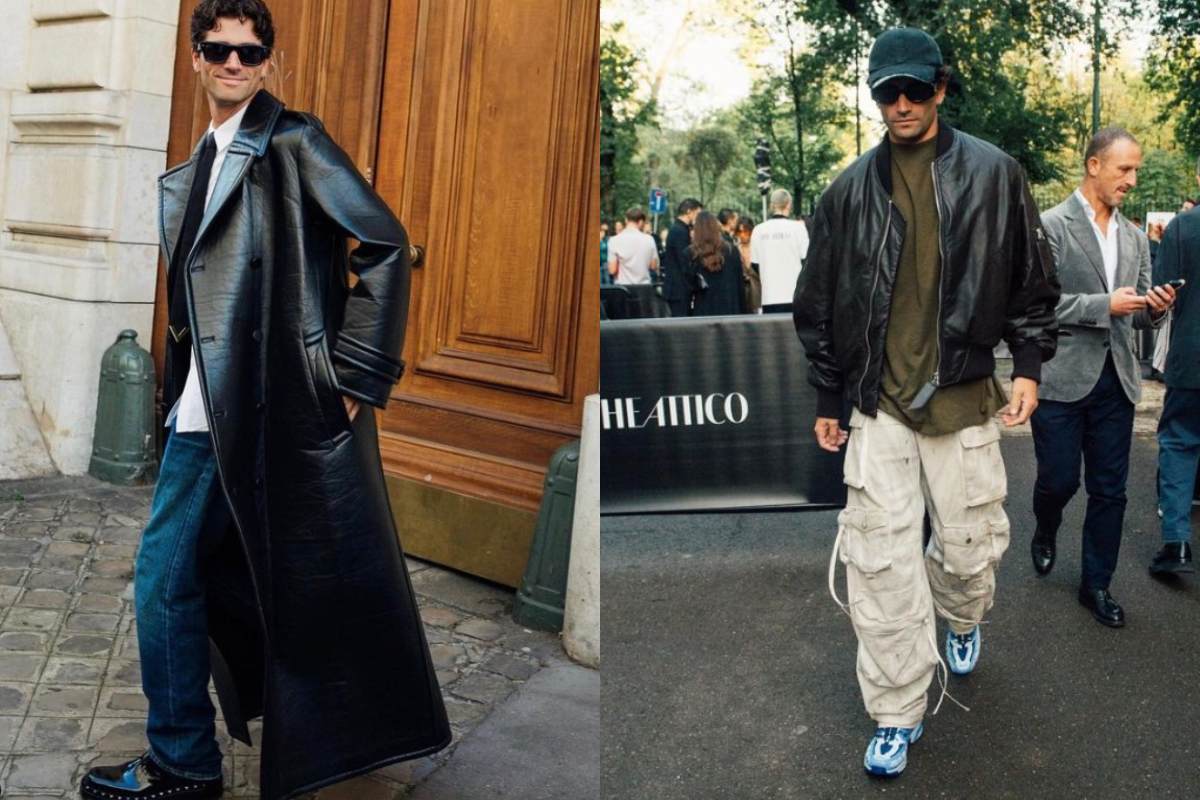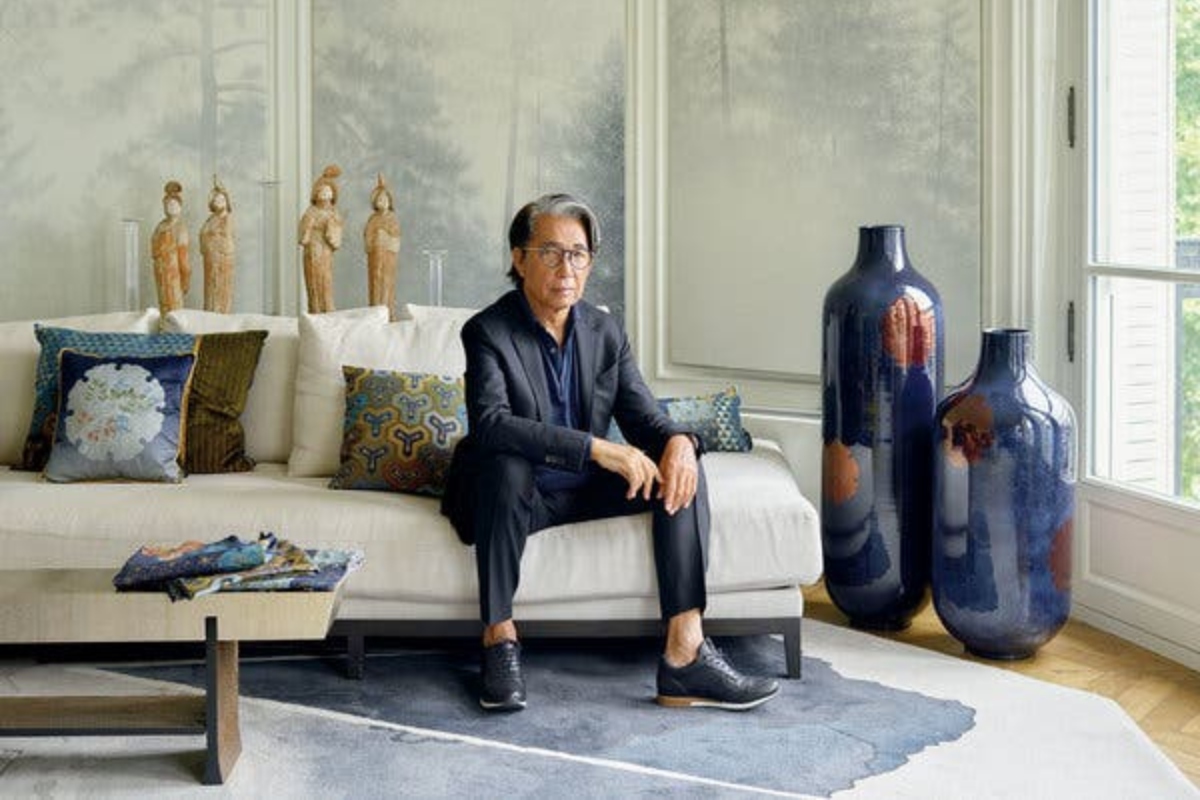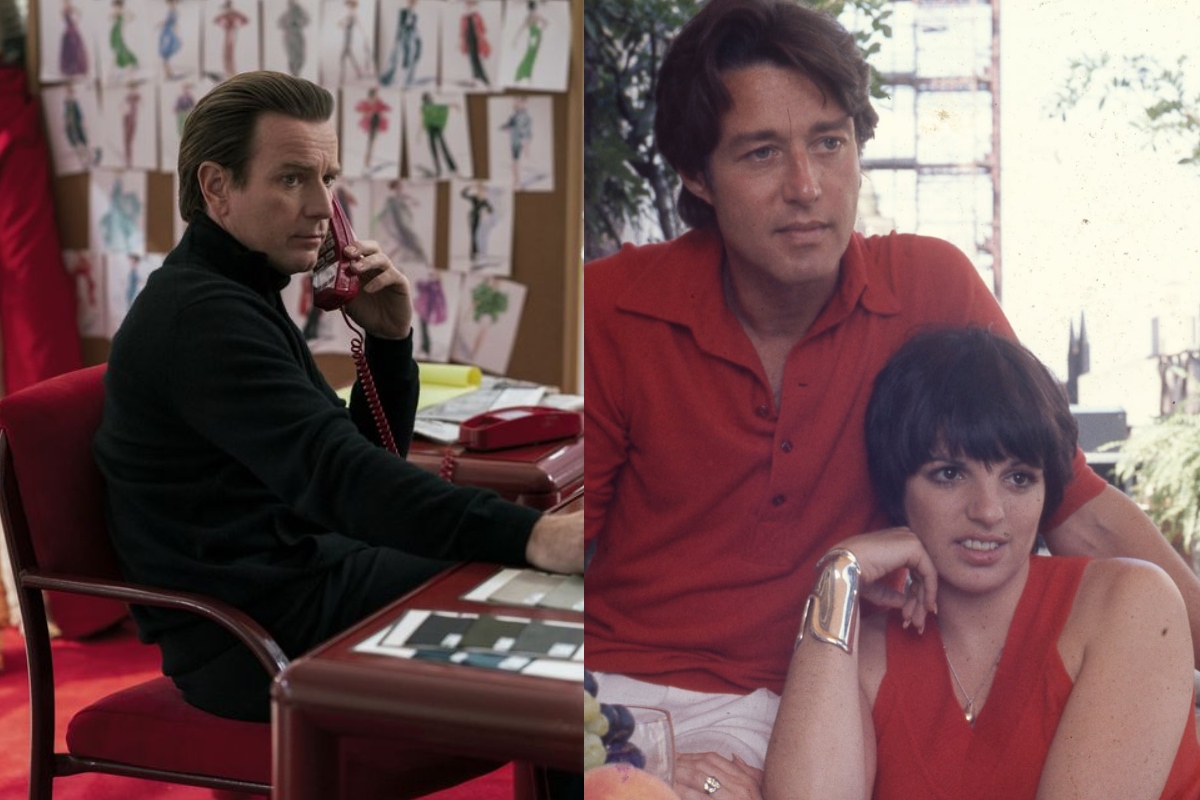
Behnood Javaherpour: Η αγάπη για την χώρα του και το πάθος του για τα χρώματα τον έκαναν έναν από τους μεγαλύτερους Fashion Designer
Συνέντευξη στον Βασίλειο Βιτσιλόγιαννη
Ο Behnood Javaherpour γεννήθηκε σε μια οικογένεια που ασχολείται με το σχεδιασμό και την υφαντουργία στην Τεχεράνη. Ο πατέρας του ήταν πρωτοπόρος στο σχεδιασμό και παραγωγή εξοπλισμού κατασκήνωσης στο Ιράν εκείνη τη εποχή. Η μητέρα του ήταν αντιπρόσωπος αντικών και ασχολήθηκε επίσης με την κλωστοϋφαντουργία.
Ως παιδί ο Behnood μεγάλωσε σε μια οικογένεια δημιουργίας και χρώματος – εξ ου και το πάθος του για την τέχνη και το σχεδιασμό που αναπτύχθηκε πολύ νωρίς στη ζωή του. Το σχέδιο και η ζωγραφική έγιναν η δεύτερη φύση του, και αγαπούσε το μικρό του μπλοκ ζωγραφικής, όπου συνήθιζε να παίρνει παντού μαζί του.
Πέρασε τα χρόνια της πρωτοβάθμιας εκπαίδευσης στην Τεχεράνη και έμαθε για τα διάφορα υλικά και υφάσματα από τον πατέρα του. Ο Behnood ερωτεύτηκε τον κόσμο των υφασμάτων και άρχισε να κάνει κολάζ με διαφορετικά έγχρωμα υλικά για να φτιάξει τα ρούχα για τα σκίτσα του.
Είχε πάντα ένα ιδιαίτερο μάτι για τη μόδα και ήταν πολύ περίεργος και προσεκτικός για τα ρούχα που φορούσαν οι άνθρωποι γύρω του. Άρχισε να αναπτύσσει το πάθος του για τη μόδα καθώς μεγάλωνε σαν έφηβο και πίστευε έντονα ότι μπορεί να ασκήσει σημαντική επιρροή σε αυτόν τον κλάδο. Πιστεύει ότι λόγω της κοινωνικοοικονομικής κατάστασης, οι Ιρανοί ήταν περιορισμένοι στις επιλογές τους για ρούχα και πολύ απομακρυσμένοι και αποξενωμένοι από τον κόσμο της μόδας. Ήθελε να αλλάξει αυτό και ο μόνος τρόπος να γίνει ήταν να κυριαρχήσει στη βιομηχανία μέσω της γνώσης και της εμπειρίας.
Μετακόμισε στην Ιταλία σε ηλικία 17 ετών και ενώ μελετούσε, άρχισε επίσης να δουλεύει με τους τοπικούς σχεδιαστές και να μαθαίνει το εμπόριο κατά τη διάρκεια των διακοπών του.
Αυτή η εμπειρία ήταν τεράστια για εκείνον καθώς ήταν σε θέση να μάθει την τέχνη του εμπορίου από πρώτο χέρι και να κερδίσει την εμπιστοσύνη που απαιτείται για τη δημιουργία ενδυμάτων. Άρχισε να σχεδιάζει και να προσαρμόζει αξεσουάρ και αυτό έγινε η σημαντική απασχόληση, αφού τελείωσε το λύκειο.
Ο Behnood σπούδασε στο Politecnico di Milano στο τμήμα International Business και αργότερα πήγε στο Instituto Marangoni για να συνεχίσει με ενθουσιασμό το πάθος του για τη μόδα.
Αποφοίτησε το 2011 και ίδρυσε το δικό του label Behnood στη Νάπολη. Μετά από χρόνια επιτυχημένων δραστηριοτήτων στην Ιταλία, ο Behnood έχει επεκτείνει το εμπορικό σήμα του στην αγορά της Μέσης Ανατολής και της Ευρώπης, όπου τα ρούχα του είναι δημοφιλοί μεταξύ των μοντέρνων σχεδιαστών. Κατάφερε να εμπνεύσει και να προσελκύσει τους νέους Ιρανούς με τα απλά αλλά μοναδικά σχέδια του και είναι υπερήφανος που μπόρεσε να επηρεάσει τη βιομηχανία της μόδας στην περιοχή. Πιστεύει σθεναρά ότι μια μέρα θα φέρει πίσω το χρώμα, το σχέδιο και το στυλ στη χώρα του αλλά και στη Μέση Ανατολή. Αυτή την στιγμή έχει επιτύχει αυτόν τον στόχο.
Interview: Vassilios Nicolaos Vitsilogiannis
Behnood Javaherpour was born into a family involved in design and textiles in Tehran; Iran. His father was the pioneer of designing and producing camping equipment in Iran at the time. Behnood’s mother was an antique dealer who was also involved in the thriving textile world.
As a child Behnood grew up in a household of creativity and colour – hence his passion for art and design developed very early on in his life. Drawing and painting became second nature to him and he loved his little sketch-book where he used to take everywhere with him.
He spent his primary school years in Tehran and learnt about the different materials and fabrics from his dad’s trade. Behnood fell in love with the world of textiles and fabrics and started doing collage boards with different coloured materials to make garments for his sketches.
Behnood always had a special eye for fashion and was very curious and observant of the outfits people wore around him. He started to develop his passion for fashion as he grew into a teenager and believed strongly that he can have a major influence in this industry. He believed that due to socio-economic situation, Iranians were limited in their choices of clothing and that they became very distanced and estranged with the world of fashion. He wanted to change that and the only way to do was to master the industry through knowledge and experience.
Behnood moved to Italy at the age of 17 and whilst studying, he also started working with the local tailors learning the trade during his vacations.
This experience was a huge learning curve for Behnood as he was able to learn the tricks of the trade first hand and gain the confidence required to create garments.He started designing and tailoring outfits and this became a full time job after he finished his high school.
Behnood further education at the Politecnico di Milano where he studied International Business and then later he went on to Instituto Marangoni to continue his passion and enthusiasm for fashion.
He graduated in 2011 andestablished he’s own label Behnood in 2005 in Napoli. After years of successful business in Italy, Behnood has extended his brand into the Middle Eastern and Europe market where his outfits are popular amongst the fashionable professionals. Behnood has also managed to inspire and attract the young Iranians with his unique yet simple designs and is proud to have been able to influence the fashion industry in that region. He strongly believed that one day he will bring back colour, design and style to his people and the Middle East and today he has achieved this goal.
What were your influences during childhood?
I grew up in a household full of creativity and colours. The passion for Art and design existed in my family.
Why did you decide to choose fashion designing as a career?
I had a special eye for fashion. I was observing people dressed in different outfits around me. So, I wanted to know more about fashion.
What’s the favorite part of being a fashion designer?
A life style that can influence people positively
Where you draw your inspiration while designing? .Can you define fashion?
Fashion is a popular style or practice, especially in clothing, accessories, makeup, hairstyle and body. Fashion is a distinctive and often constant trend in the style in which a person dresses to have life style. It is the prevailing styles in behaviour and the newest creations of textile designers. Because the more technical term costume is regularly linked to the term “fashion”, the use of the former has been relegated to special senses like fancy dress or masquerade wear, while “fashion” generally means clothing, including the study of it. Although aspects of fashion can be feminine or masculine, some trends are androgynous.
What are the skills one should have to be a successful fashion designer?
Sewing, and design skills, knowledge of the fashion industry, and unparalleled perseverance. You’ll also need to create a strong fashion portfolio and strengthen your knowledge of business and finance in general, designers have a wide array of skills, including drawing, an eye for color and texture, an ability to visualize concepts in three dimensions, and the mechanical skills involved in sewing and cutting all types of fabrics, get excellent sewing tuition if you haven’t already learned this skill well. Being able to sew difficult fabric under challenging situations will stand you in excellent stead throughout your career but you need to work at it – it’s a skill that doesn’t come easily to many people.
Understand how fabrics move, drape, breathe, react when worn, etc. Your in-depth knowledge of fabric is absolutely essential to using it properly when designing. Also know where to source materials from.
Learn from existing designers, not just who they are, but their backgrounds, their signature style, the learning that they undertook, where they studied. Knowing this will help you to be a better designer yourself, as you can borrow and build on their ideas.
Learn how to create storyboards and product ranges. Be good at researching trends and finding inspiration from social media, comparative shopping and trade shows.
Start developing these skills at a young age. Be prepared to devote hours of time to perfecting your craft. A little bit everyday will make you gain a deep understanding of fashion on the long run if you are planning a career and how to know run and develop a brand.
What are the qualifications one should have for a fashion career?
Creativity; drawing and computer drafting skills; knowledge of textiles, sewing, and construction; strong communication and collaboration skills; retail sales experience a plus
How do you stay up to date regarding fashion trends and designs?
Designers and fashion brands showcase their upcoming merchandise once or twice every year. The runway shows organized for this purpose can educate you profusely on the wide range of latest fashion trends, as these shows are hosted and attended by people who are in the industry or piqued by it.
Being among a plethora of fashion enthusiasts is a guaranteed way of inspiring your individual styling. This is why it is always enlivening to be part of fashion related events as audience, volunteer, organizer, whatever you may.
You might not find yourself wearing the slightly queer clothes and accessories runway women are so comfortably cat walking in, but notice the colors, designs, patterns, shapes, etc. and the cut of the dresses. You can get more wearable versions of runway fashion in street stores a couple of months later. Having prior knowledge straight from the runway will keep you ahead of others when these trends hit the local stores.
Social media brings you snippets from the personal lives of celebrities and designers. Fashion bloggers and enthusiasts are found offering free advice and insights into which mix and matches work good and which do not. Twitter and Instagram are the most widely accepted channels for exchange of such exciting inside stories. Follow your style inspirations or find your way to new, young people through any fashion hashtag. You can also converse with people and get your fashion queries answered. Internet is truly a great place to begin.
When you draw your sketches are you using a computer or the conventional pencil mode? Why?
Pencil, pencils laying around your house will do in a pinch but they vary widely in quality and depth of value, gray to black. Test each pencil you happen to come upon on your paper to see how it feels. Use the one that feels the most responsive to your touch it’s means I enjoy with that’s and at the end I scan it and put in computer for final item.
Do you design for both men and women? What’s the personal style you put into your designs?
I do for both, my brand is classic and different with another brand because I’m doing fashion and fine art so each session I’m doing my design with one artist in different style and type .
How do you see the fashion industry today, and how in ten years forward?
The global apparel market is valued at 3 trillion dollars, 3,000 billion, and accounts for 2 percent of the world’s Gross Domestic Product (GDP). The fashion industry includes many sub industries, such as menswear, women’s wear and sportswear.
The women’s wear industry is valued at 621 billion dollars
The menswear industry is valued at 402 billion dollars
The retail value of the luxury goods market is 339.4 billion dollars
Children’s wear had a global retail value of 186 billion dollars
Sports footwear is valued at 90.4 billion dollars
The bridal wear industry is valued at 57 billion dollars.
Although the ability to indulge in luxury fashion has become within the reach of a large proportion of Europeans, Europe’s fashion industry faces exponential competition from Asia. This paper examines the pricing pressures in Europe’s fashion industry, whether it is value shopping or indulgence.
How you manage your designs to be ready on time and control stress during the creation of a new collection?
Find a quiet place, get comfortable, focus on a one- to five-word phrase you fancy and repeat it over and over. Take deep diaphragmatic breaths, in and out, in and out. You may want to set a timer in the beginning for 10 minutes so you won’t worry about time. The practice sends healing hormones into body for relaxation and health.
How easy is it to work with models or other fashion designers during a fashion week?
Runway girls & boys are often compared to “human coat hangers.” In other words: Models are just modes of transportation for garments. Even Twiggy used the phrase to dismiss her groundbreaking career, declaring when she retired: “You can’t be a clothes hanger for your entire life!”
Being a brand name like you, what are the roadblocks you have to pass through?
Social media is about being able to engage with your audience, and replying in real-time to your customers’ issues and complaints but there more item:
Signature of brand
Fully Maximizing Social Media Impact
Billboard
Qualification
One advice to a new fashion designer who wants to shine bright like you. What he/she should have or do?
Define who you are and what you do
– Define your client/customer/audience and how you want to speak to them
Sit down with a pen and paper and get ready to list EVERY attribute your potential customer has
– Make your personality shine through your brand
You are your brand, which means your brand should be you. Customers are real people so they want to relate to people not businesses
– Make it official and professional
If customers are to trust you and commit to your brand, your brand needs to be professional
– Find your niche, deliver, repeat
For your customers to be loyal to you, you need to be loyal to your brand
